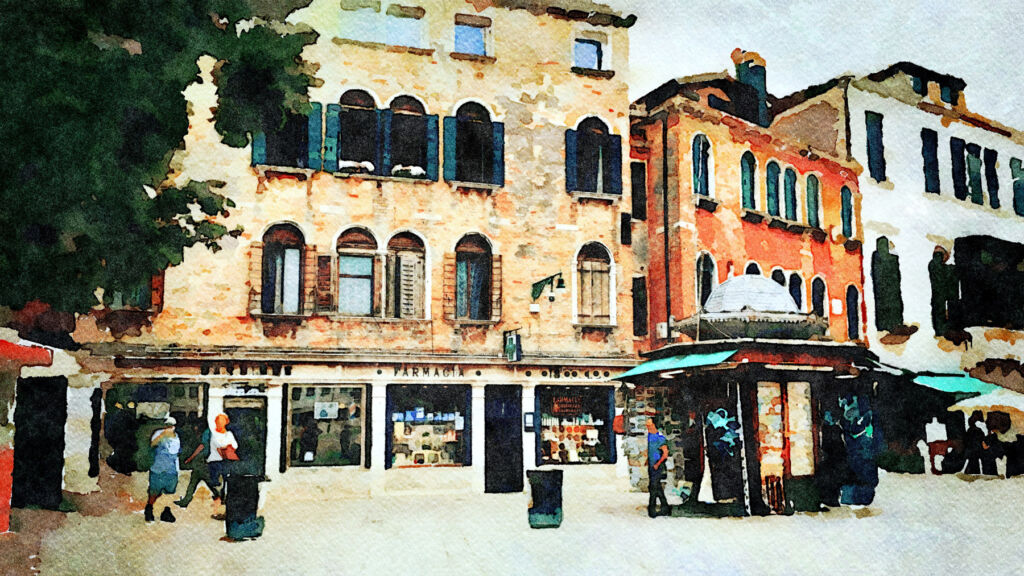
Emilia Grears investigates what makes ‘The Perfect UK High Street’ and discovers one of the most essential ingredients is an ‘Ode to the Past’.
For much of modern British history, the high street has been an essential component of family life. Sadly, the primary retail streets that helped to form friendships and build community spirit are disappearing at an alarming pace.
As someone who is categorised as ‘Generation-Z’, I haven’t experienced what others have told me was the ‘heyday’ of the British High Street. However, browsing photographs, talking to people who have and watching videos of high streets from just two or three decades ago shows me how much has changed.
Back then, a high street would have stores such as a pre-PC World Currys, Dixons and Tandy’s, with excited parents and children with their faces up against large windows, captivated by what was on offer.
These shops, which in days gone by were genuinely state-of-the-art, were joined by local larger and smaller stores such as Woolworths, Debenhams, C&A, bakeries, greengrocers, multiple clothes shop and confectioners, etc. all with beautifully presented window displays. They were places where business owners and staff exchanged local news with their customers and referred to regular shoppers by their names.
Another treat for the whole family was going into newsagents, such as John Menzies and W H Smith’s, when their primary trade was magazines and books. In those days, when reading required the physical turning of a page, each family member would head off, excitedly looking for their preferred book or periodical, without the distraction of every other type of product being around them and the onslaught of psychological manipulation.
What we seem to have today can be described as a ‘soulless, whisper of the past’, and instead of putting the requisite effort and funding into bringing the high street’s glitz, soul and glamour of back, local councils seem more focussed on establishing even more monolithic retail parks, hammering more nails into the high street’s coffin..
In 2024, you can walk into a aircraft-hangar-sized supermarket on one of the aforementioned retail parks, replete with an interior dominated by white paint, and housing a seemingly endless array of food products, many of which struggle to be classed as ‘real food’. And once you’ve filled your shopping cart or basket with the ‘so-called’ foods, there’s a decent chance chance you will be paying via an unmanned automated till.
Today’s shopping is seemingly devoid of pleasure and fun and and the advent of technology and drive for profits has meant people can now complete theirs without talking to another person in a store or by pressing of a few buttons/keys, which will make their purchases magically appear on their doorsteps.
The automated, faceless processes we engage with in these modern times are a stark reminder of how much has been lost. Millions of people throughout the country yearn for the past, craving the friendliness and simplicity that the high street gave them—single streets across the UK that helped to build community spirit and the personalities of many that we look up to today.
Oh, how it has all changed.

But is it too late to rekindle the most beloved version of the high street? It may be thanks to two words that is always inflicted upon us, which are progress and convenience.
Many of the bigger-name brands seem far too focused on ‘fleeting trends’ and virtue-signalling through modern, tech-filled contemporary styling and features introduced simply to get their current crop of customers to buy what they later realised, they probably didn’t need.
Across Britain, local businesses are being replaced by what the corporate ‘big-wigs’ believe is better. Newer retail park stores seem to spring up on a daily basis, all the while, it is removing the soul from shopping and making people forget the purpose of the high street.
The Data
Although taken for granted, the changes in the retail sector and shoppers are far from pleased. A recent poll revealed that 98% of respondents agreed that the High Street has changed dramatically over the past 10 years, with three-quarters (74%) claiming shopping has gotten worse.

The survey also revealed which were the most sought-after shops, a necessity if the UK’s high streets are ever to regain their former standing.
Some of the most desired retail outlets Brits want to see on their high streets include a deli (38%), a florist (45%), an ice cream parlour (41%), and vintage shops (37%), which appeal to all generations.
Unsurprisingly, the study also revealed that 58% of our population dream of having a decent pharmacy on their high street, and 45% state that a local pub is a ‘must-have’.
The research conducted by Smart Energy GB also showed that 62% of people believe the ideal high street must have a mixture of modern and traditional shops.

Retail progression has caused the closing of a wide variety of product-specific retailers, with bakeries, cafes, restaurants, and grocers all in the highest at-risk category for closing down.
Another factor in their demise is increased overheads, which is shown in the results of a survey carried out in January 2024². The data showed that 29 per cent of small business owners are reviewing business costs this year, 20 per cent stating reducing their energy costs is necessary for their business to survive, and from a survey in October 2023¹, just under nine out of ten admitted they cannot afford to waste any energy.
A glimmer of hope for the high street is local communities genuinely want to support local businesses. The Smart Energy GB survey showed that 39% of respondents would go out of their way to do so, and 57% would do so when they can.
Nine in ten (87%) would even go so far as to say they are happy to pay more money for specific products to support independent shops, actively opting to make their way to a small business as many as three times a week.

Rekindling the high street from days gone by would create more harmony in the community, which is what it is all about; it is no wonder that 96 per cent feel sad when they see these stores disappear.
To help create the perfect high street, consumers need to play their part. Giving small, traditional businesses an opportunity to establish themselves is a good start.
The Smart Energy GB research of 2,000 people across Britain was commissioned by Smart Energy GB and conducted by Perspectus Global during April/May 2024.
¹ Taken from a survey conducted in October 2023
² Taken from a survey conducted in January 2024
![]()




You must be logged in to post a comment.